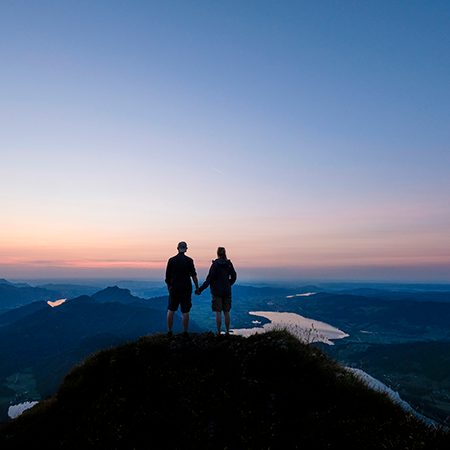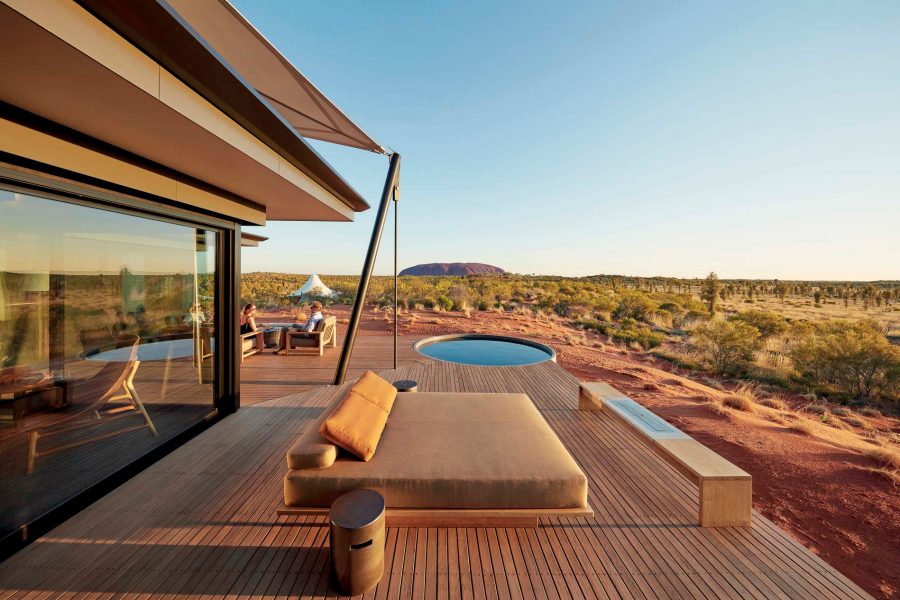It must have hurt. In New Zealand, they’ve created a network of luxury lodges that stretch from the tip of the North Island to the bottom of the South. They are doing great business, and are a fine advertisement for the country.
But until recently, Aussie offerings of really beautiful, high-end resorts and hotels were scattered pretty thinly across the country.
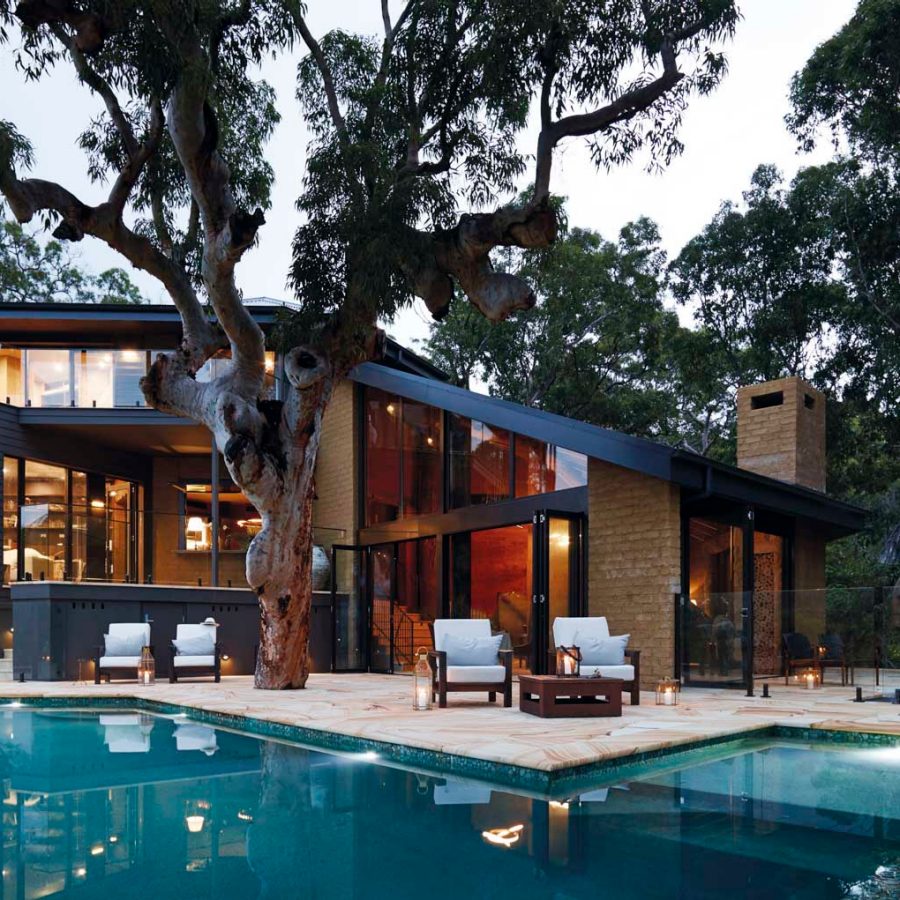
That’s changing. Luxury Lodges of Australia is striving to emulate the success of its neighbours across the Tasman Sea. We’ve been visiting several of them to see how Australian designers and owners are interpreting the needs of a highly mobile and super-demanding audience.
Here are three very different Australian luxury lodges in three very different – but quintessentially Australian – landscapes. They’re more than places to stay: they all have a story to tell about the land, its people and its history.

Pretty Beach House
New South Wales
Looking out from a steep, sandstone cliff in the Bouddi National Park , I can see the outer suburbs of Woy Woy, a town that had a racy reputation back in the 1920s and ’30s but has now become a thoroughly respectable, unflashy place popular with retirees.
Below are sparkling blue waters playing host to weekenders’ yachts and some very pretty beaches. Early European explorers were of a literal cast of mind: we are, in fact, above the settlement of Pretty Beach.
This is where John Singleton, a well-known adman and entrepreneur, built a retreat high in the hills. Built and then rebuilt: devastating bushfires are a recurring theme in these parts. There was another recently and the national park authorities won’t allow us to go hiking in the woods for fear of falling branches. But Pretty Beach House was spared.

This is a place infused with the spirit of affluent Australia as it began to emerge in the 1970s. There are polished sandstone floors, old telegraph poles for beams and pillars, and the instantly recognisable work of Australia’s most Australian 20th century artist, Sidney Nolan, on the bare stone and brick walls.
I’m staying in The Retreat: ‘zero-gravity’ (adjustable) bed, linen sheets, sheepskin rugs and a decked terrace with a plunge pool gazing down to the bay and a flotilla of cumulus clouds in a perfect blue sky.
Once you’re in, you don’t need to worry about outgoings – that’s the way with all three lodges I stayed in. And when ‘all-inclusive’ includes, say, a meal of kingfish followed by lamb, then apricot cheesecake with passion fruit, paired with Yarra Valley chardonnays and a Mudgee shiraz – then count me in.
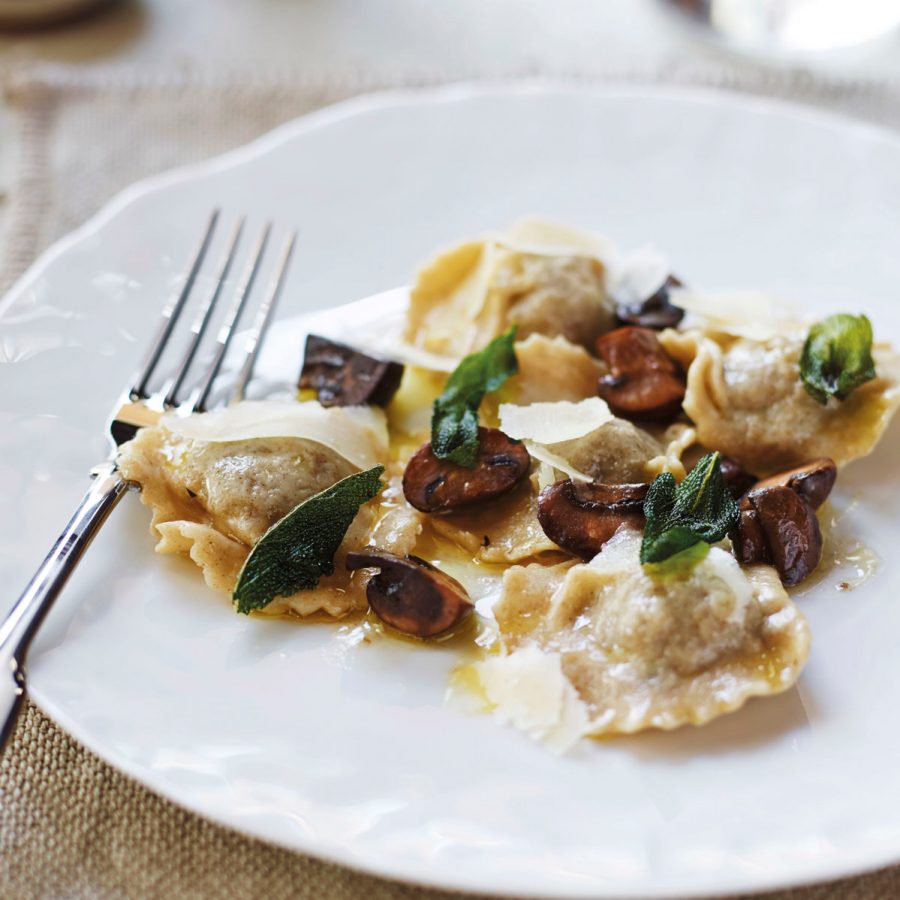
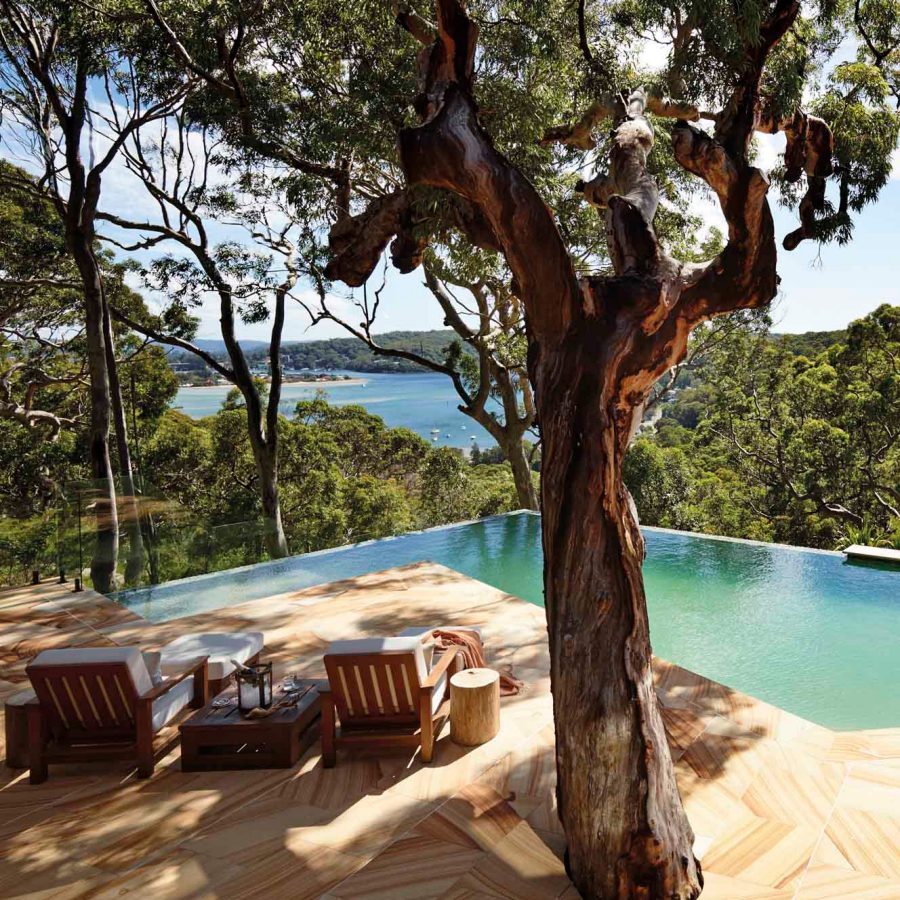
That was just for lunch. There was an epic tasting dinner with chef Duncan Kemmis still to come. Exercise was required. I walked between the bays, trying to keep property investment thoughts from intruding as I passed covetably laidback hill villas. A row of white cockatoos messed around on a picket fence. Feathery trees looked over the milky beige and baby blue waters.
Of course, a few hundred thousand years before country mansions or, indeed, Sydney arrived, there were others roaming these lands. Tim, from the Guringai people, emerged from the bushes that night while we were sipping our champagne. He performed a traditional smoking ceremony and promised to show us rock carvings in the hills the next day.

We walked through shaded, sandy paths and winced as we saw mountain bike tracks intersecting with ancient carvings of whales and sharks.
We tasted mouth-numbing gum resin from Grandmother Trees and pumped Tim for information. There were things he’s allowed pass on, and things he can’t. Sharing remains a precious gift in a dry land scarce of resources. For Tim’s forebears, information was power – and survival.
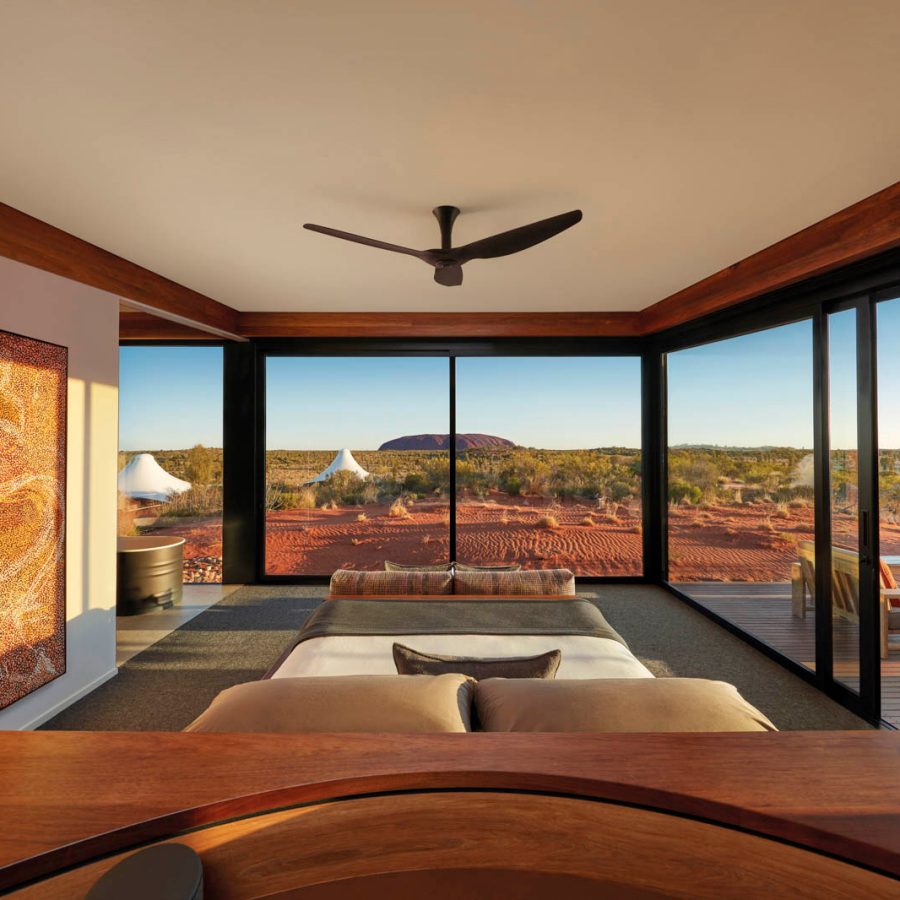
Longitude 131
Uluru
We drive along the bitumen from Ayers Rock Airport, then on a rutted, red-baked track into Longitude 131 . ‘The gate keeps the snakes out,’ says the guide.
In the dry heart of this dry continent, the jokes tend to be pretty dry, too. But they also draw the sting from this harsh, arid place of wild dogs, pythons and tough hill kangaroos who survive, somehow, on the spiky spinifex grass.
Longitude is a place that keeps you in an uplifted frame of mind, as if you’ve just drunk a glass of ice-cold champagne. That’s because you usually have.
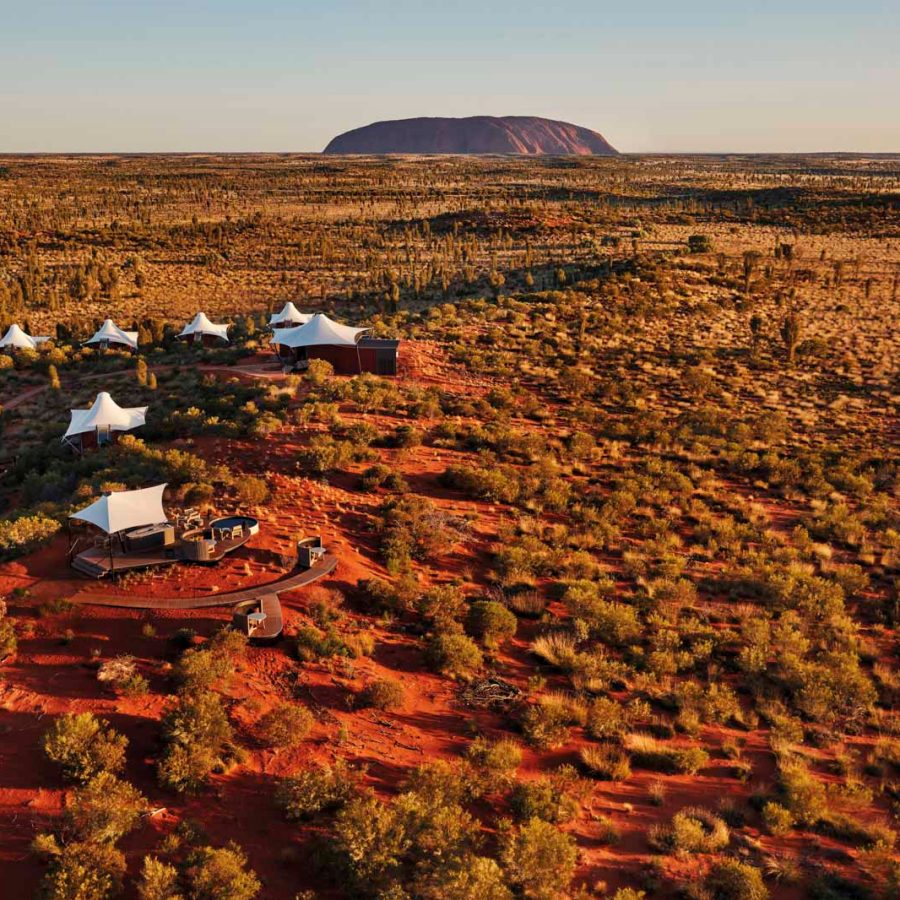
The lodge opened in 2002, but was acquired and rethought 11 years later by the Australian Baillie Lodges Group (who also opened the sublime Southern Ocean Lodge on Kangaroo Island). Its armada of white-sailed tents in a sea of red earth have been imitated from Namibia to Cambodia.
But what no other tented lodge has is a nearby giant inselberg. No other hotel gets literally as close to what Wikipedia romantically calls a ‘prominent isolated residual knob or hill’.
To get even closer to Uluru, we go on sunset walks, surrounded by the babble of nations, always likely to be mugged with champagne by the ever-present and obliging Longitude staff.
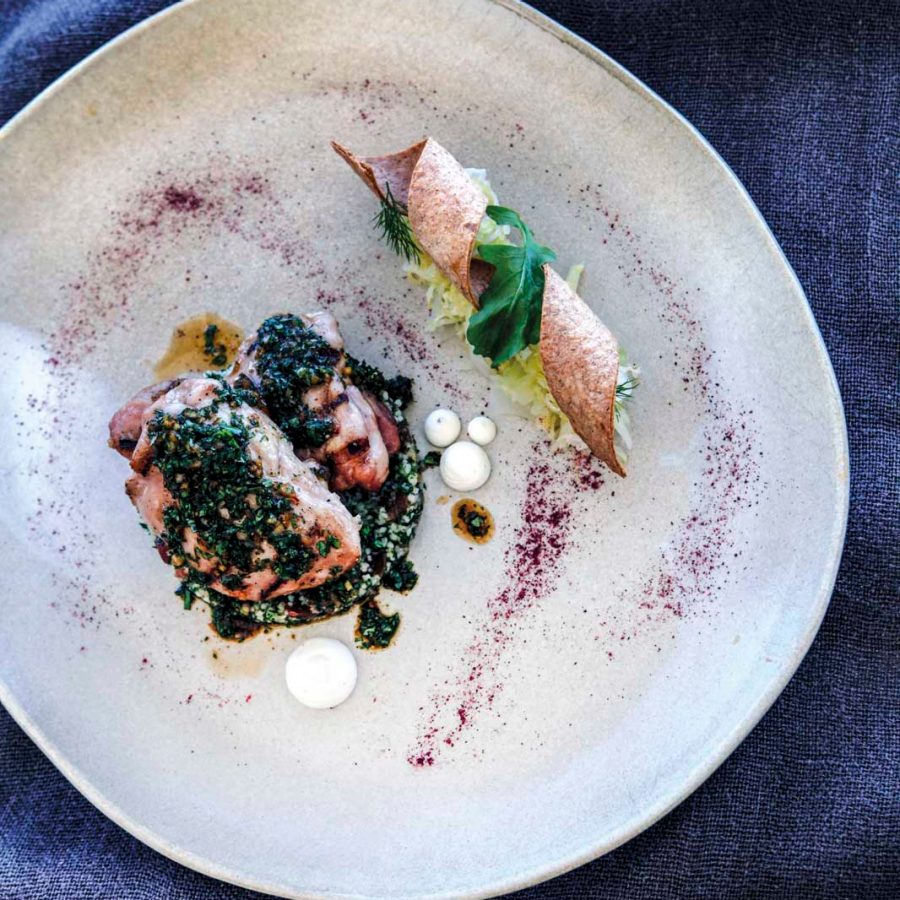
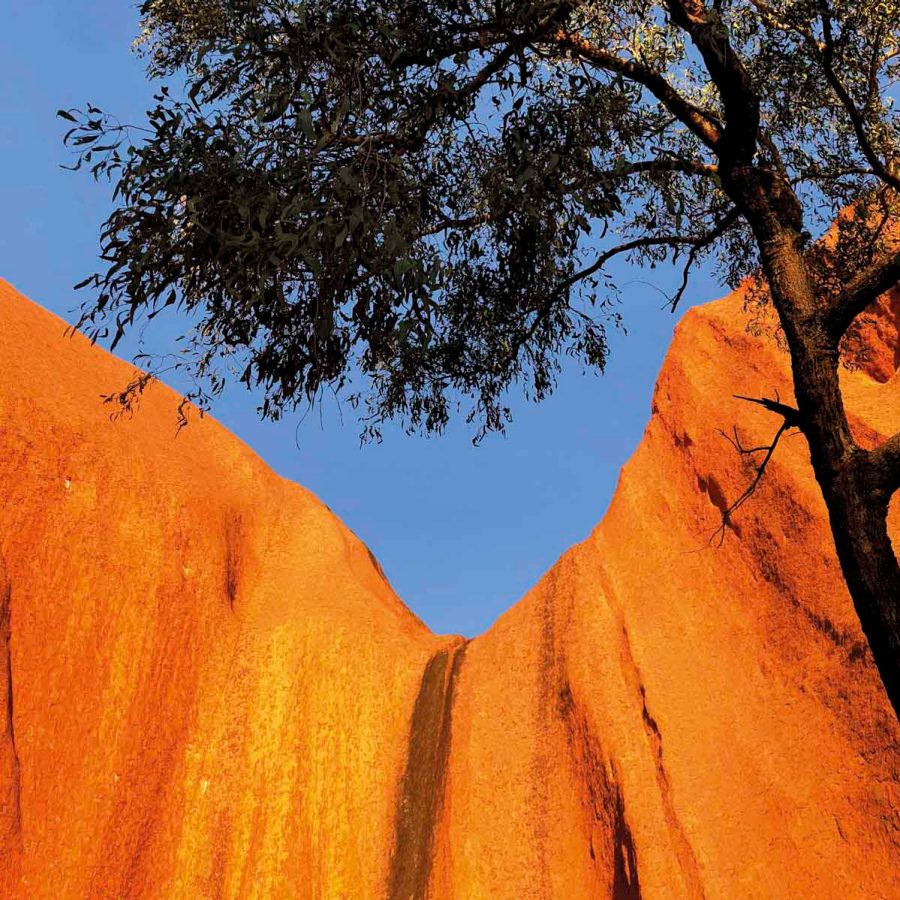
I wished I’d brought a warm jacket for those desert nights. Luckily, Longitude 131 had a selection of RM Williams gilets.
This is an interesting year for Uluru. From October 2019, the unofficial prohibition on climbing a place sacred to the Yankunytjatjara and Pitjantjatjara people becomes law. So the lodges and tour companies are seeking other ways of entertaining guests. There’s hiking in the bulbous loaf-hills of Kata Tjuta and a night walk around an extraordinary installation by Bruce Munro called Field of Light, where 50,000 solar-powered lights spread across the hills like Monet’s poppies reimagined in space.
There are more encounters with the stars during the astronomy nights offered by Longitude.

Credit: Bruce Munro Studio
But the rock remains the real star. At dusk, I sat on my deck and wrote down all the shades it went through: dun, dusky pink, rose, russet, brick, cherry, oxblood, light rust, medium rust, dark rust, amber, orange, mauve, bruised and finally – sorry for the bathos – a kind of potato-skin brown.
Looking is enough, but touching is extraordinary if you get the chance.
On our last walk we circuited the base. Laying a hand on the thin, friable scales of its great exterior is something you’ll remember forever. I’m not going to fake some culturally appropriated spiritual experience. Still, I touched Uluru with a sense of deep reverence. But it’s not a cathedral. It’s warm, like a living thing. I looked up at the huge, elephant-backed spine and almost expected to feel a distant heartbeat, a slow respiration from deep within. Your own heart skips a beat, and you pull away as if you’ve had a shock.
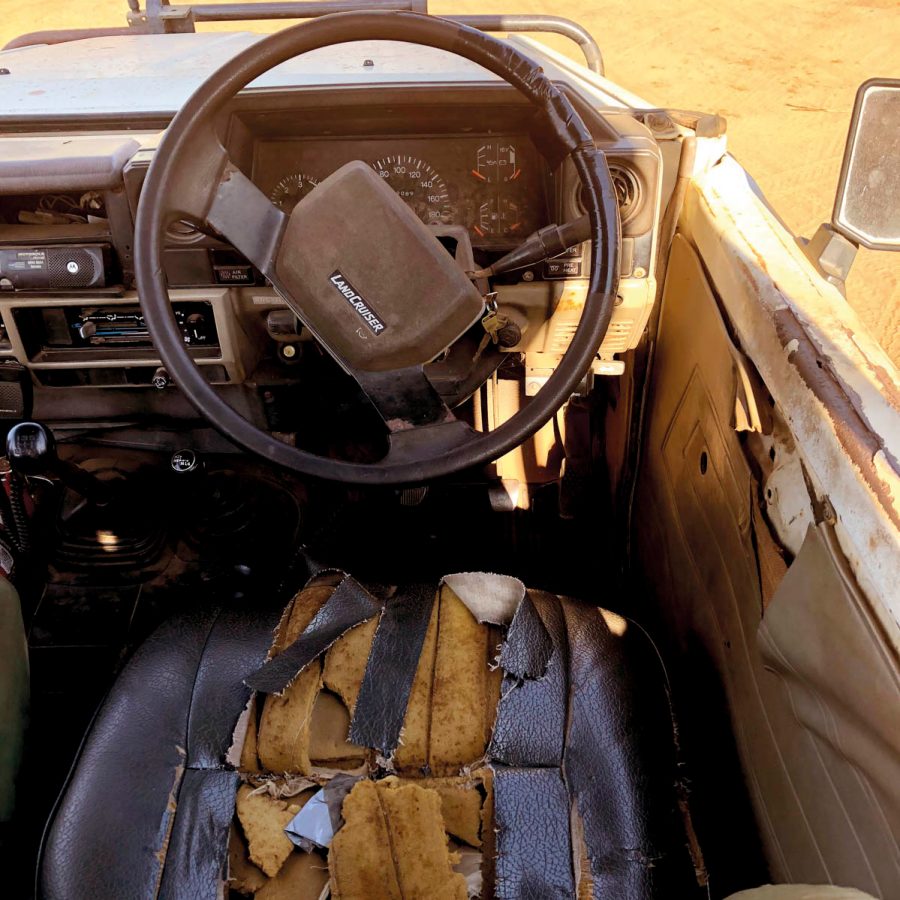
Bamurru Plains
Northern Territory
We are flying east from Darwin. The millennia of ebbing and teeming waters have created a kind of leftover dinner plate where the sauces all run together: spinaches and coppers, taupes and cobalts.
We land at a rural Aussie airstrip and climb into a Land Cruiser, tough and sun-burnished as a rhino. The driver’s seat is a work of art: shredded leather, dust-encrusted steering wheel, peeling fabric and battered side panels. You’ve seen better looking interiors on the scrap heaps. But it’s a Land Cruiser: it’ll go on forever.
This is not fancy resort time. We arrive at a converted woolshed, and this honest aesthetic goes throughout. The rooms stand on stilts with wooden verandas. They have tin roofs and fly screens.
We’ve been in chic, urbanised Australian country and wandered the ancient Aboriginal heartland. Now we are in pioneer land.
True, there’s a nice swimming pool with elegant chairs, big cushions and shade. It overlooks a floodplain: tufty, rough grass is littered with wallaby poo, termite mounds and desiccated palm fronds. A herd of buffalo fossick in patches of grass. This is the nursery. Dads and mums are resting knee-deep in the cool distant water, trying not to worry about crocodiles. They wander in at dusk. And if you want to see a happy water buffalo, watch them having a good bum scratch on a termite mound. They also love ploughing through a clump of turkey bushes: the flowers are natural antihistamines. They work on mosquito bites.
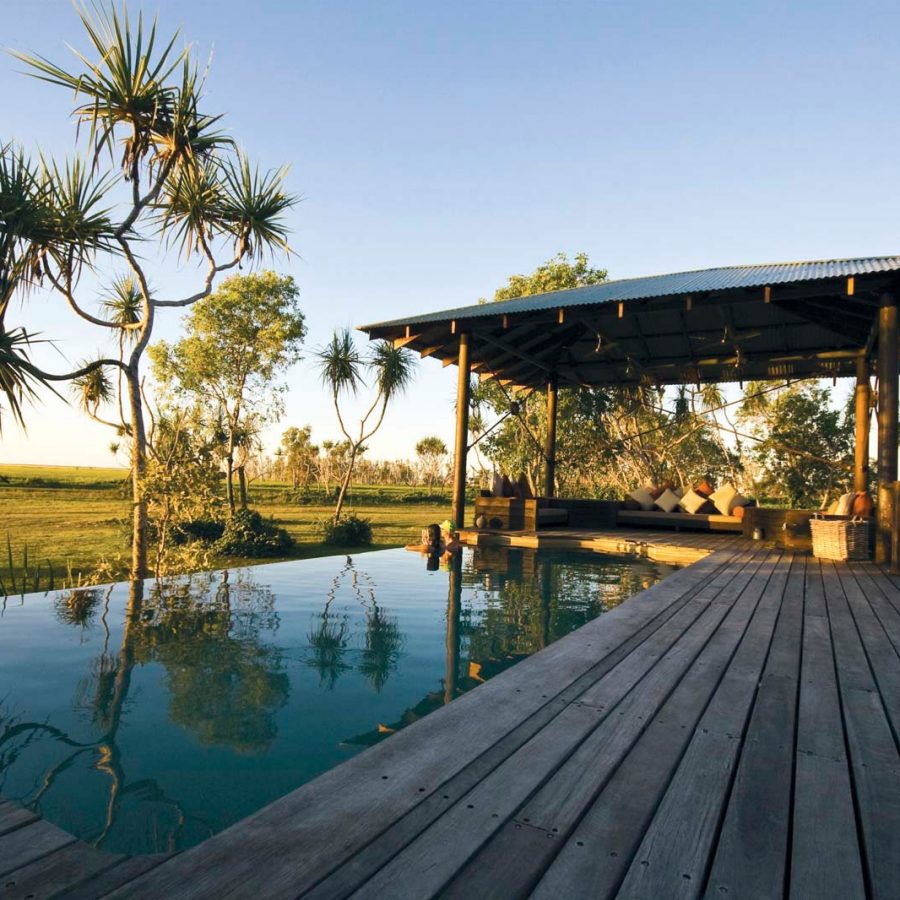
The next day, we are out on the airboat across the floodplains and into the ‘ponds’ – quiet, spooky places of reflections and ghostly paperbark trees.
The only croc of the visit is a tiddler, no more than a year old, out hunting for frogs and dragonflies. If you want the big saltwater fellows, join Outback Floatplanes Adventures on an expedition from Darwin.
Poisonous South American cane toads have wreaked havoc here, especially with the snake population. That may be welcome news for nervous tourists (though you’re very unlikely to encounter the two deadliest species, the Taipans and the Brown) but it’s bad news for native species.
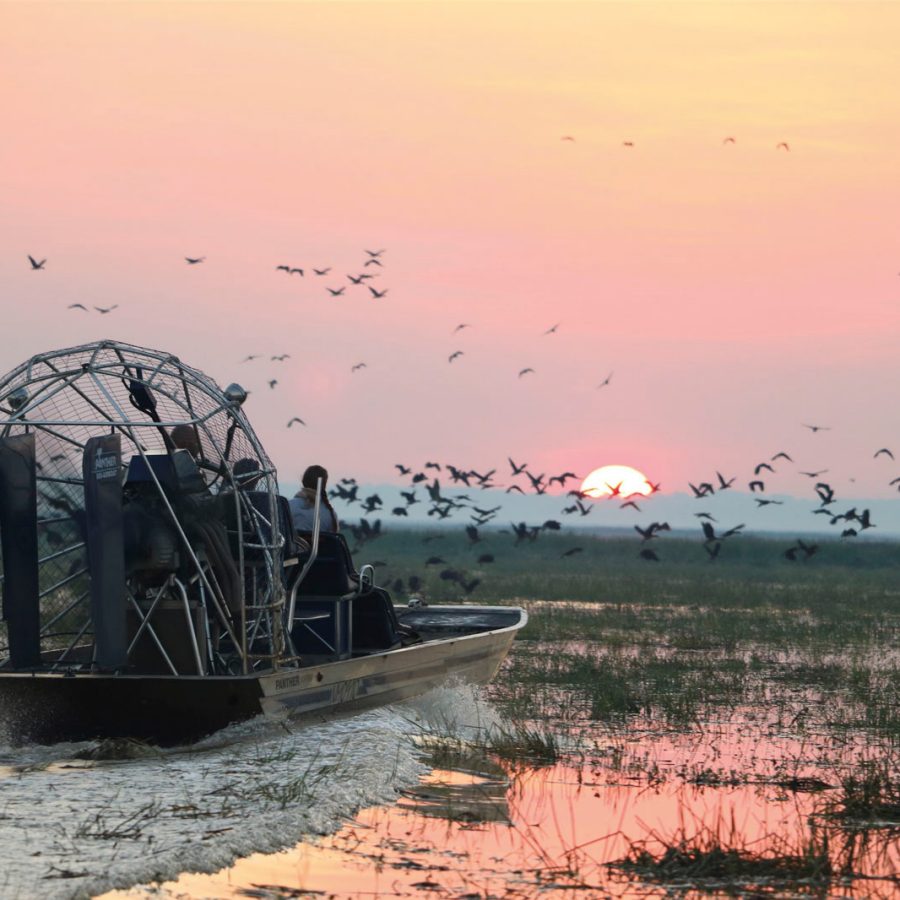
Credit: Emma Pritchett
The wallabies are thriving, though. They’re everywhere, inquisitive, then skittish. The lodge guide, Cam, reckons there is a dingo family about, too: but they’re super-shy.
I love Bamurru . It’s not some luxe lodge built from a kit designed in the Kruger. The interior has buffalo horn handles on the doors, a long, vintage table and a help-yourself bar with a little tin roof. Old fans and older photographs are set on green corrugated iron walls. You collapse into huge wicker chairs surrounded by animal skulls, antique grog bottles, hurricane lamps, pioneer cooking utensils, sculpted bark. You wouldn’t be surprised to see John McDouall Stuart, the explorer who travelled the length of the country from south to north in 1861, wander in for a cold one.
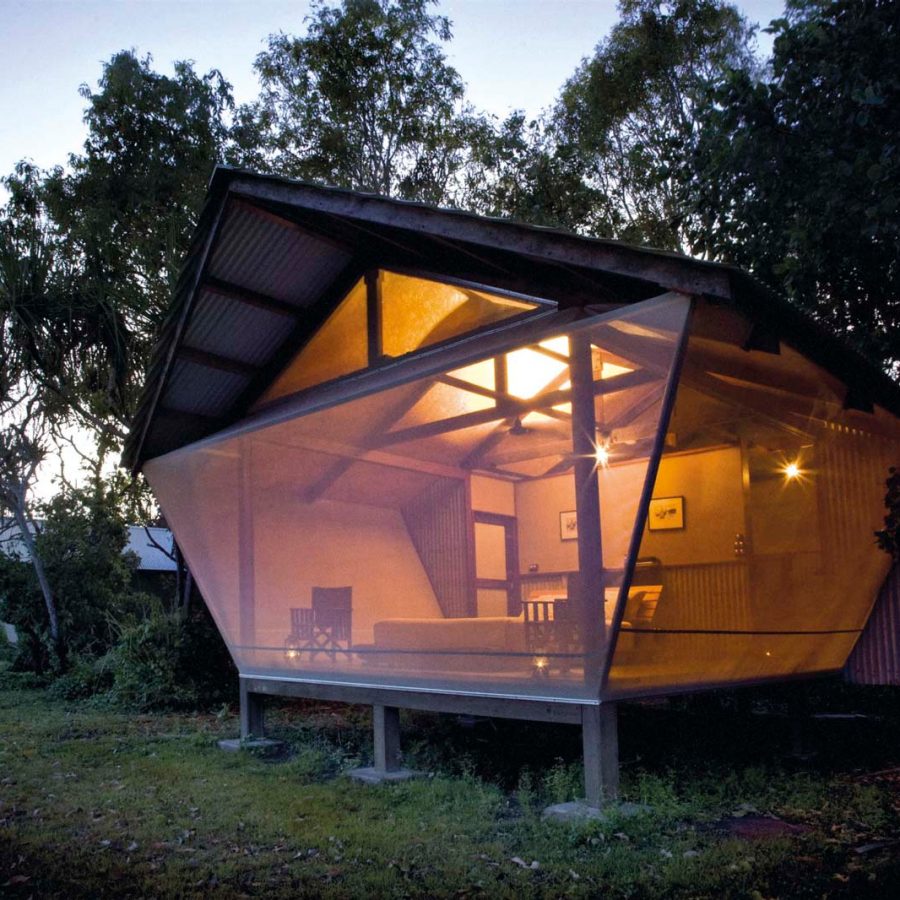
Credit: Archi Sartracom
We share dinner at the long table with a relaxed group of travellers from – everywhere, really. The conversation flows easily, unimpeded by Wi-Fi and phone signals.
Next morning, it’s the dusty ride back to the landing strip, Darwin and on to a couple of nights in Sydney.
Over obscure wines at the very cool Paramount Hotel, hipster Surry Hills is out in force. Inner City Sydney competes pretty fiercely with Brooklyn for bragging rights on the length of its beards, and the intensity of its devotion to all things craftlike. Which is great. But while the hipster bars are all beginning to look pretty much alike, there is nowhere, nowhere, nowhere, like the three places we’ve just been to.
Sydney travel information
- China – the Chinese Mainland, Hong Kong SAR, Macao SAR and Taiwan Region
- Hong Kong SAR - English
- Chinese Mainland (China) - English
- Taiwan, China - English
- 香港特別行政區 - 繁體中文
- 中国內地 - 简体中文
- 中國台灣 - 繁體中文
- Africa
- South Africa - English
- Asia
- Bangladesh - English
- Korea - English
- Singapore - English
- Cambodia - English
- 한국 - 한국어
- Sri Lanka - English
- India - English
- Malaysia - English
- Thailand - English
- Indonesia - English
- Maldives - English
- ประเทศไทย - ภาษาไทย
- Indonesia - Bahasa Indonesia
- Myanmar - English
- Vietnam - English
- Japan - English
- Nepal - English
- Việt Nam - tiếng Việt
- 日本 - 日本語
- Philippines - English
- Australasia
- Australia - English
- New Zealand - English
